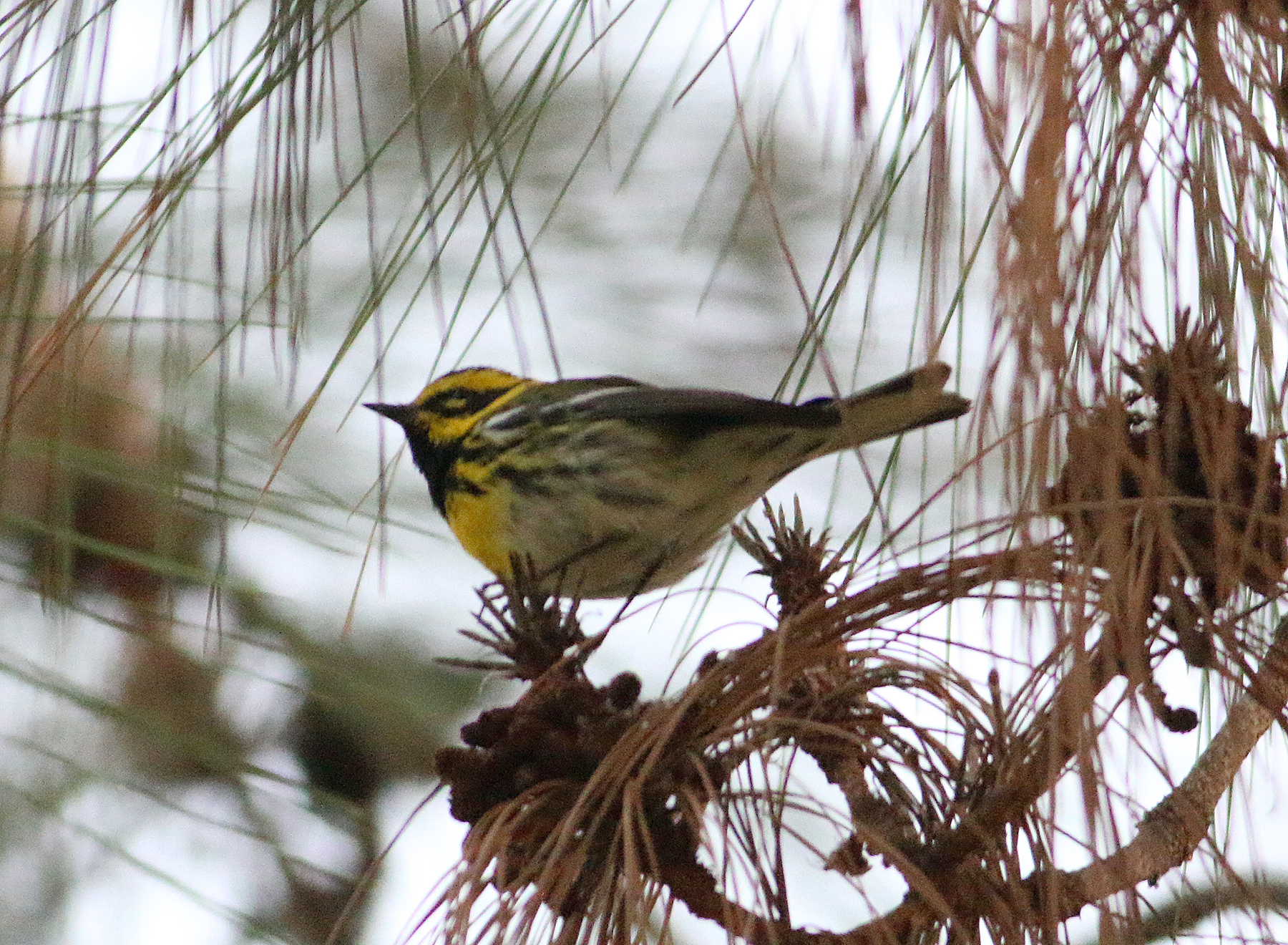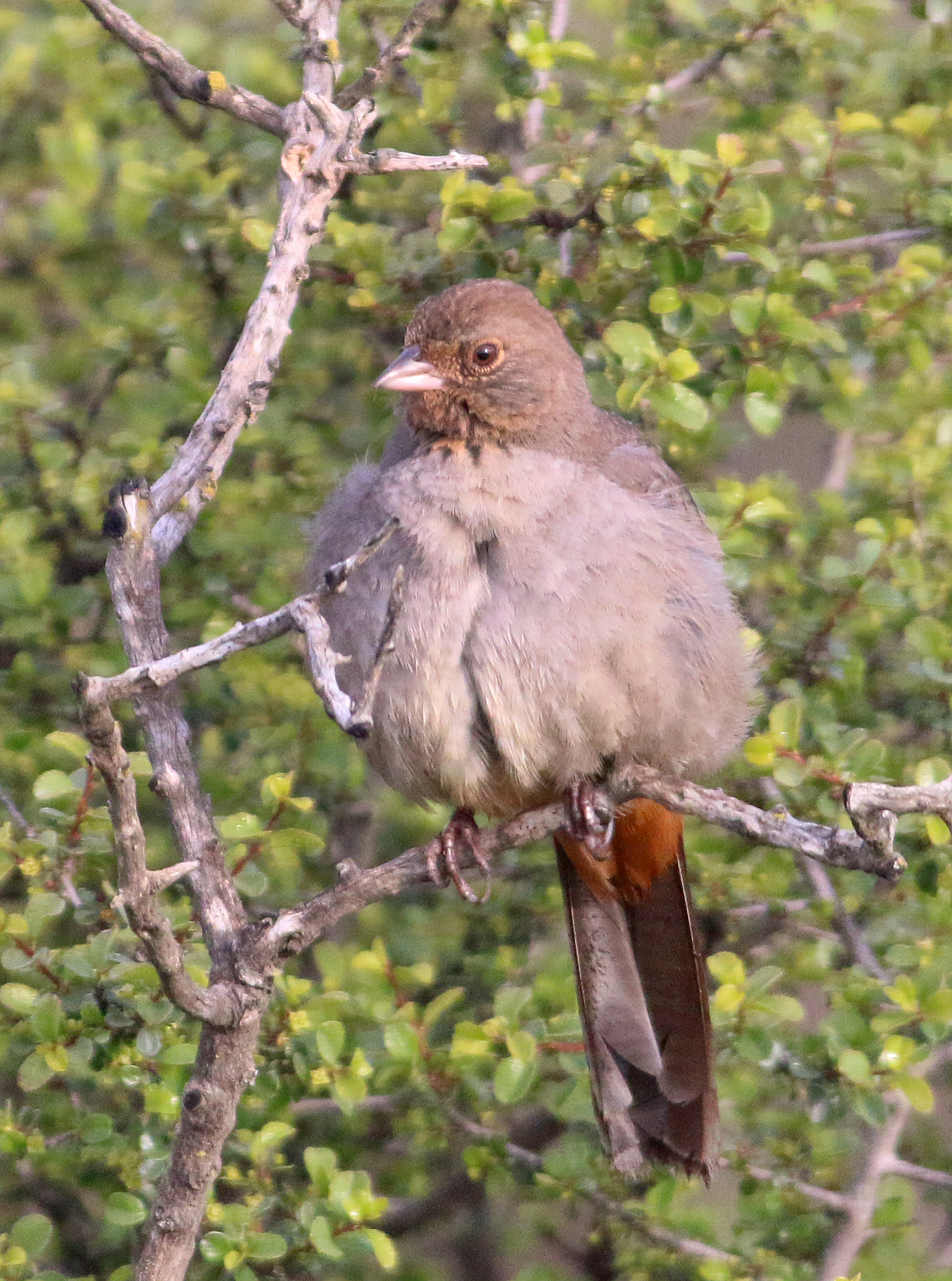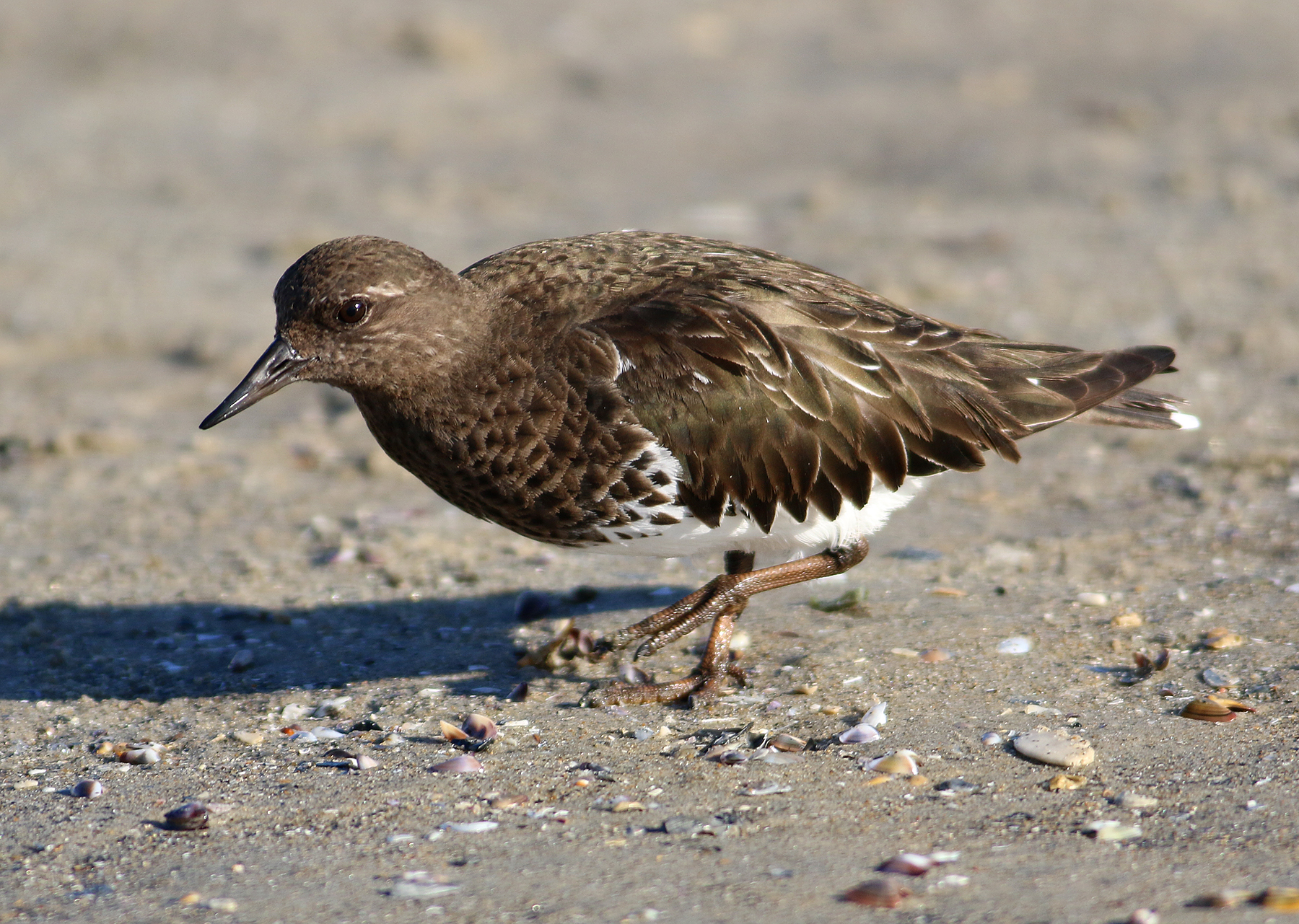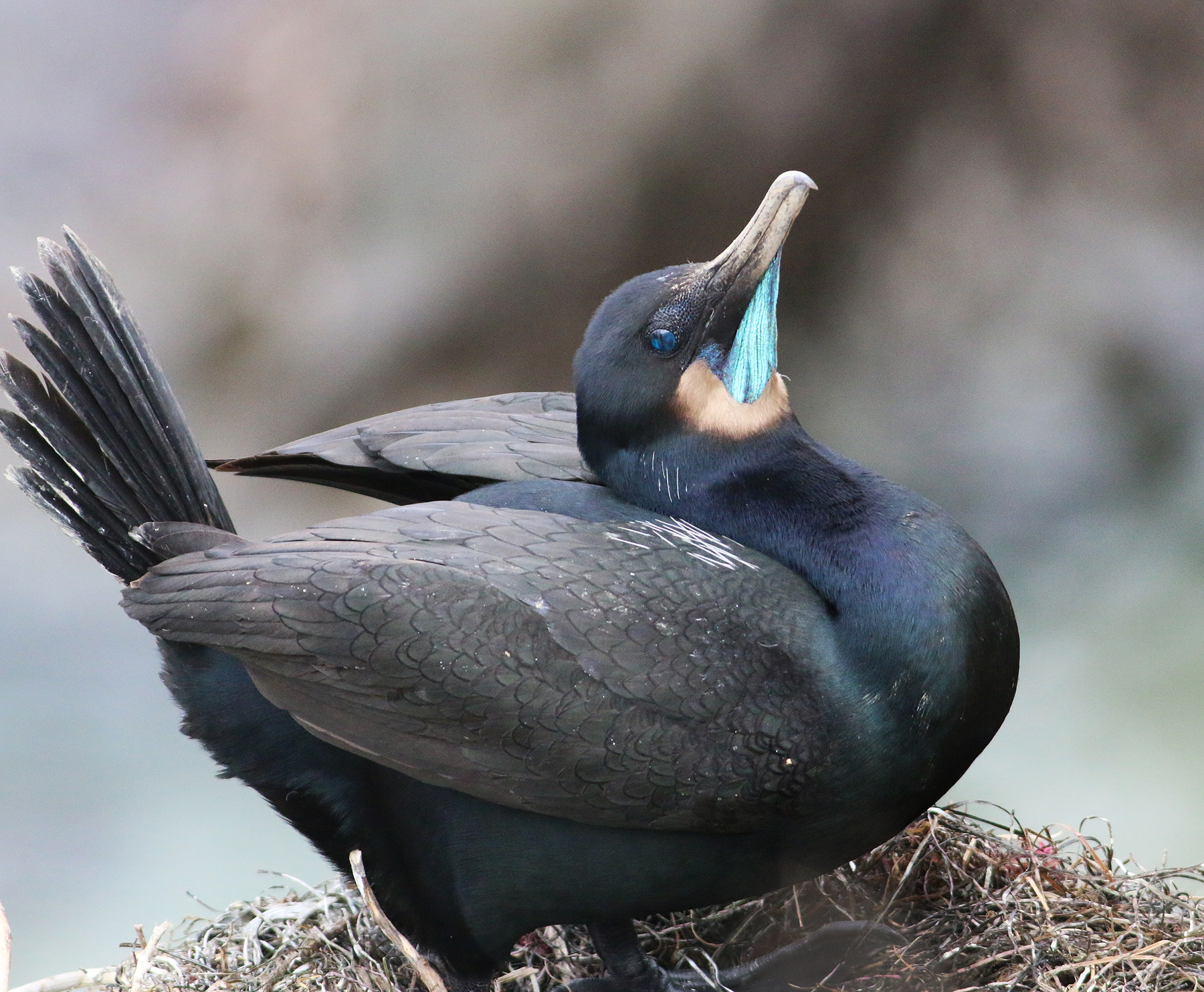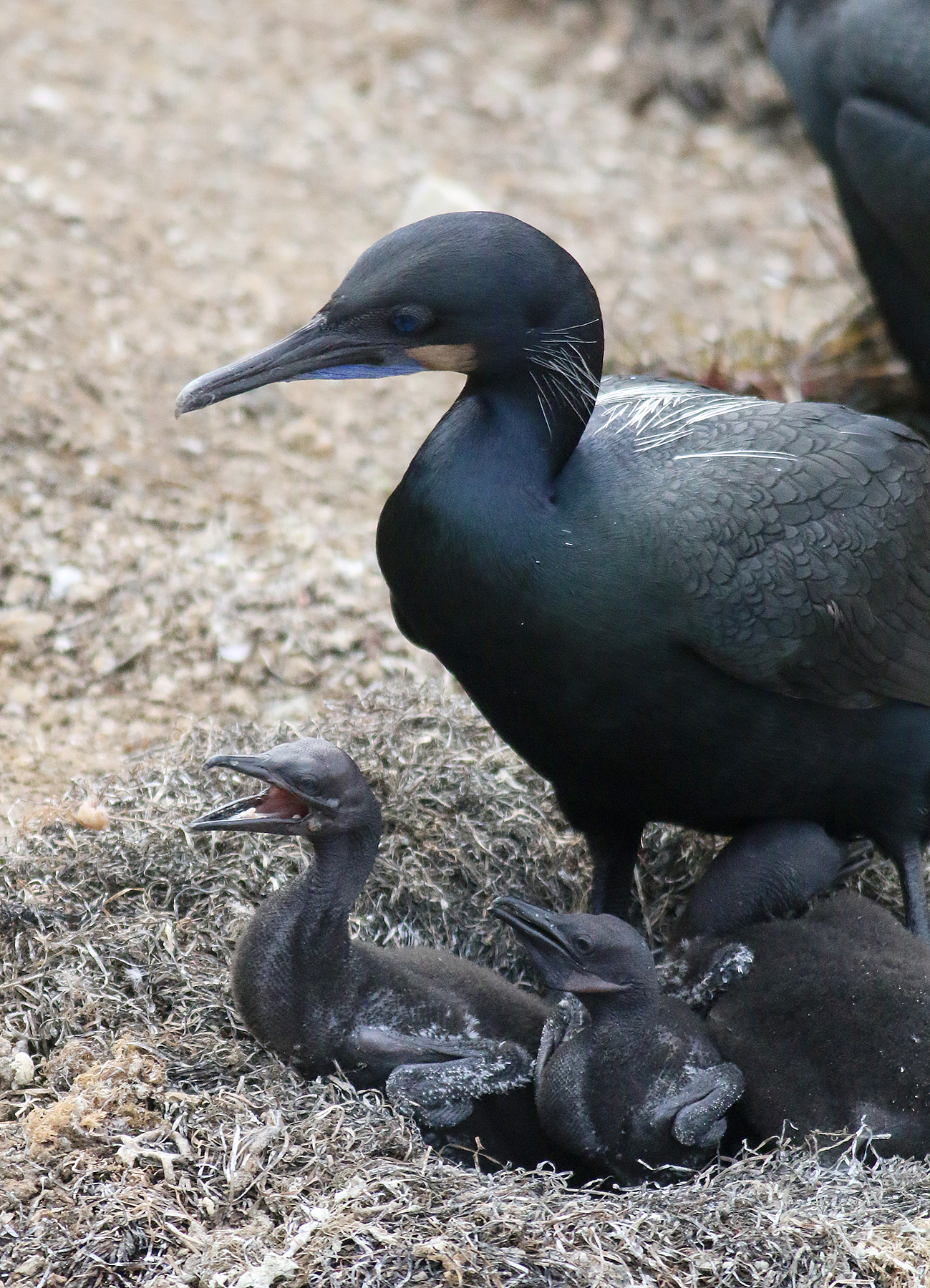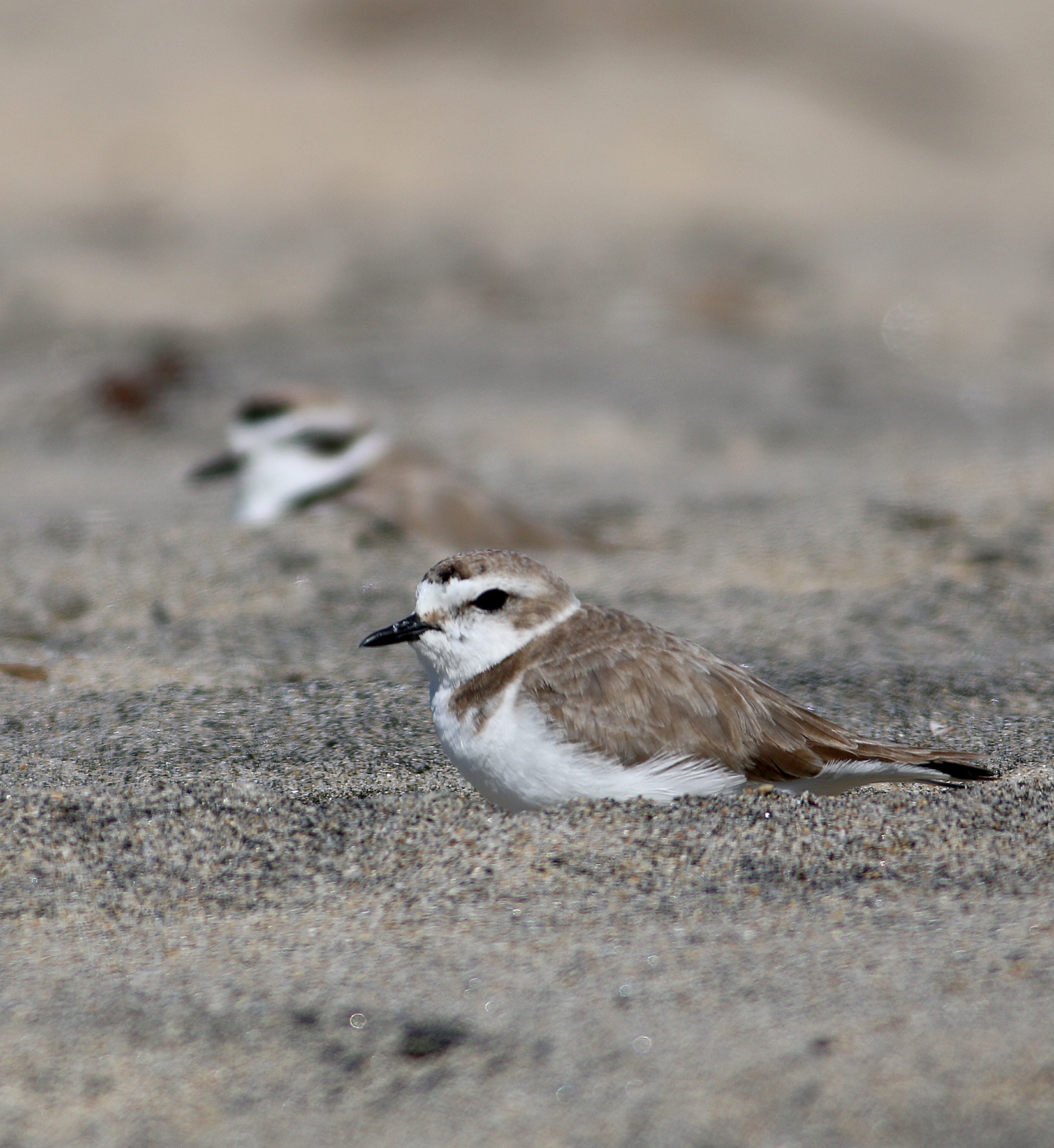March is a tough time of year for me to be in New Jersey. By this time of the year I’ve seen most of the winter birds, it has been cold for far too many months, and spring seems to take its sweet old time arriving. For these reasons I like taking birding vacations during this time of year, especially to a warmer climate to escape the lingering NJ winter. This year my friends Pete and Jeanine joined me for a 10-day trip to southern California, birding from San Diego up to Santa Barbara. This part of California has the advantage that different habitats, ranging from seaside to foothill scrub to mountains and deserts, occur within a relatively short distance. So we drew up a list of target species and set out to take advantage of those diverse habitats.
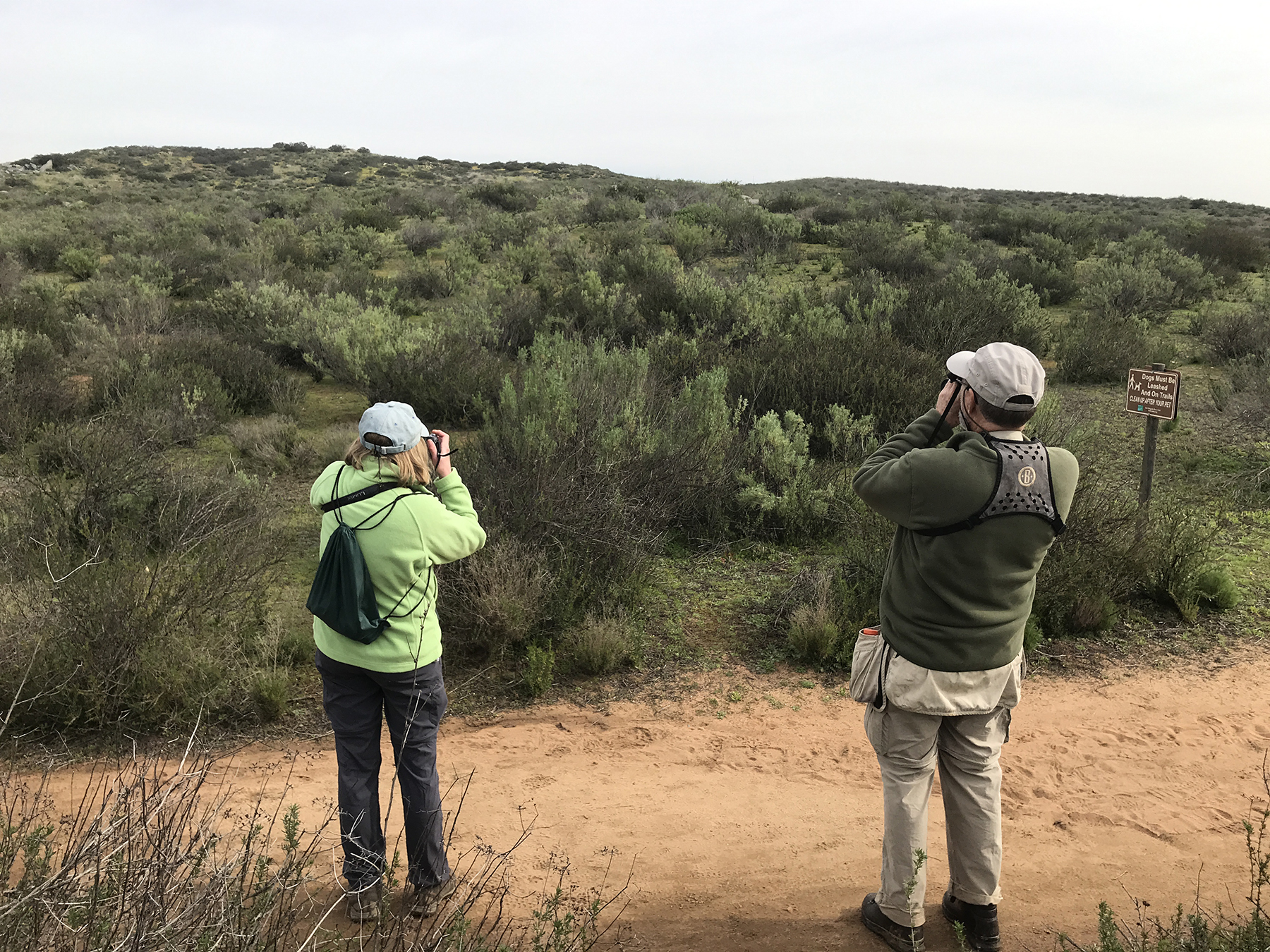
Pete and Jeanine scanning the coastal scrub habitat alongside Lake Hodges. You won’t get ‘warbler neck’ when birding here.

A coyote was also birdwatching in the scrub at Lake Hodges. Probably looking for that pesky Roadrunner.
We enjoyed two full days exploring the coastal scrub habitat in the San Diego area, especially Lake Hodges, located just 21 miles north of downtown San Diego (but still within the San Diego city limits). Before we even left the parking lot we were already enjoying species that we don’t see back home, with Western Bluebird, Black Phoebe, Nuttall’s Woodpecker, and Townsend Warbler. The scrub was filled with other species that soon would become familiar to us: Cassin’s Kingbird, Say’s Phoebe, Greater Roadrunner, California Towhee, and Bushtit. The lake hosted several ducks that we were familiar with from birding in the east, but also held dozens of Western Grebes and at least one Clark’s Grebe. Amazingly, some of the grebes were performing their mating dance ritual, which was A-MAZING to behold in person. Click here to see an example of the grebe display from the BBC.
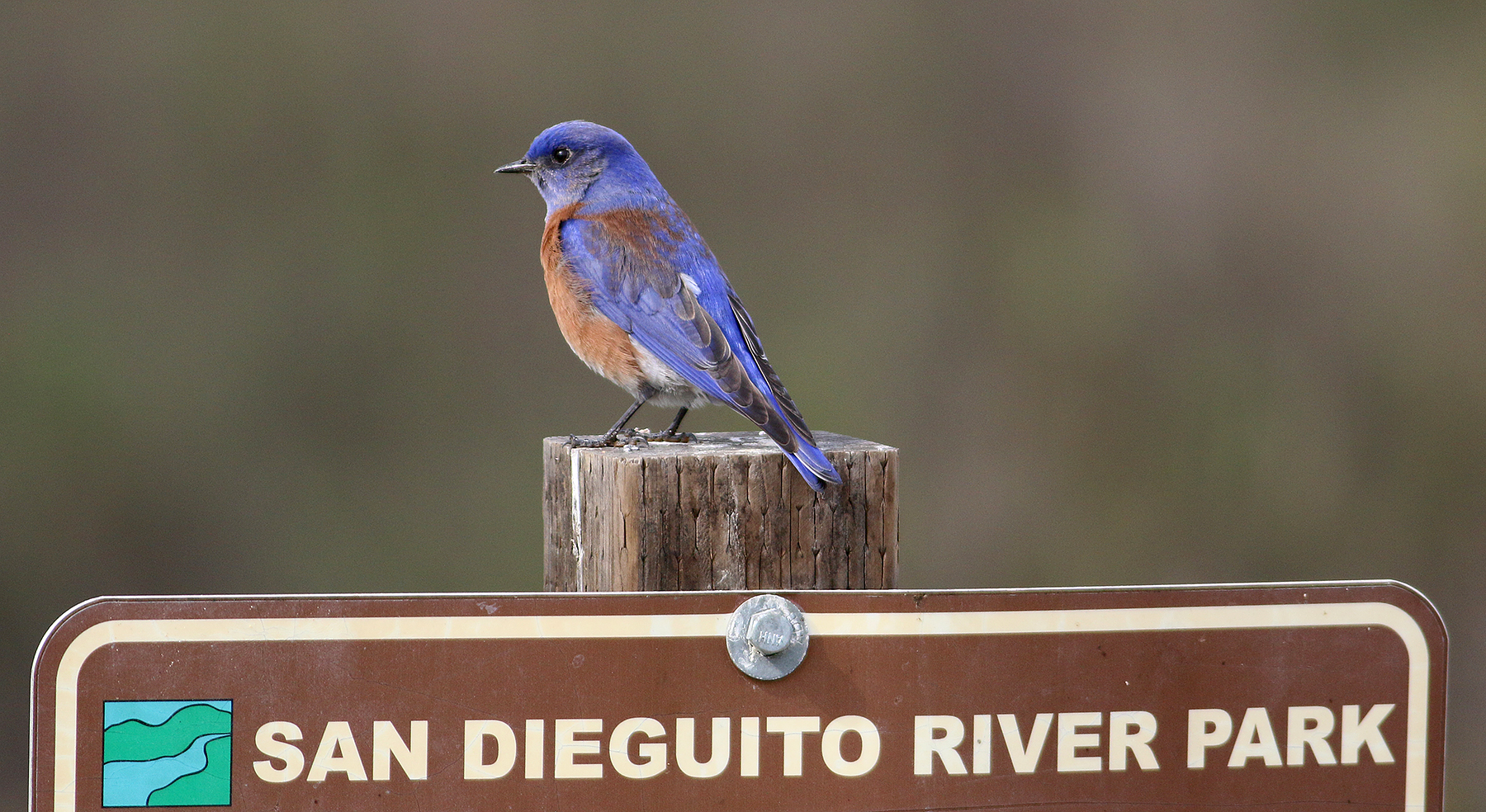
Western Bluebirds were common on this trip. I’m trying to remember….where was this one photographed?
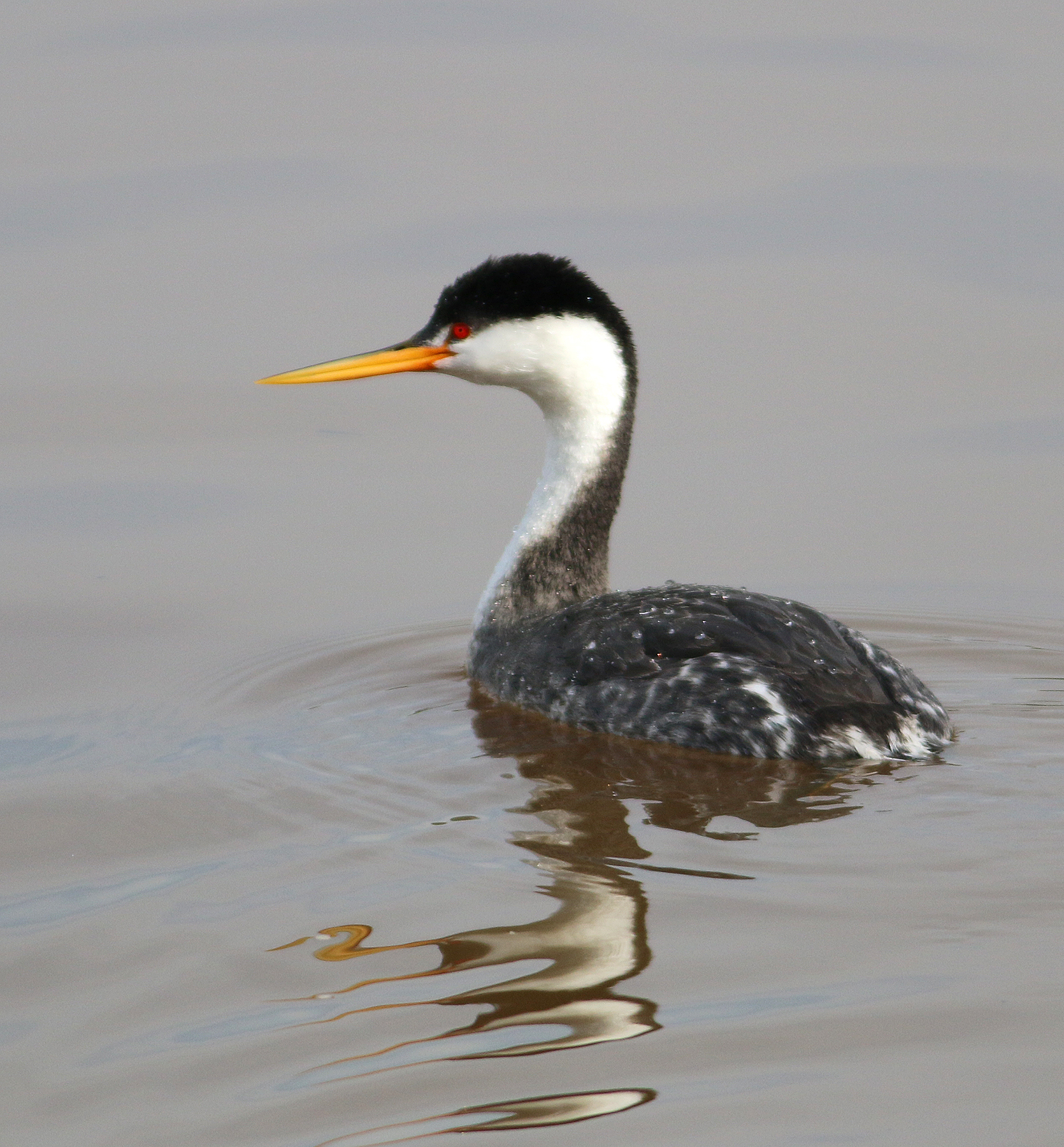
A Clark’s Grebe in non-breeding plumage at Lake Hodges. Note the partial black area by the eye. They were outnumbered by Western Grebes in a ~50-to-1 ratio.
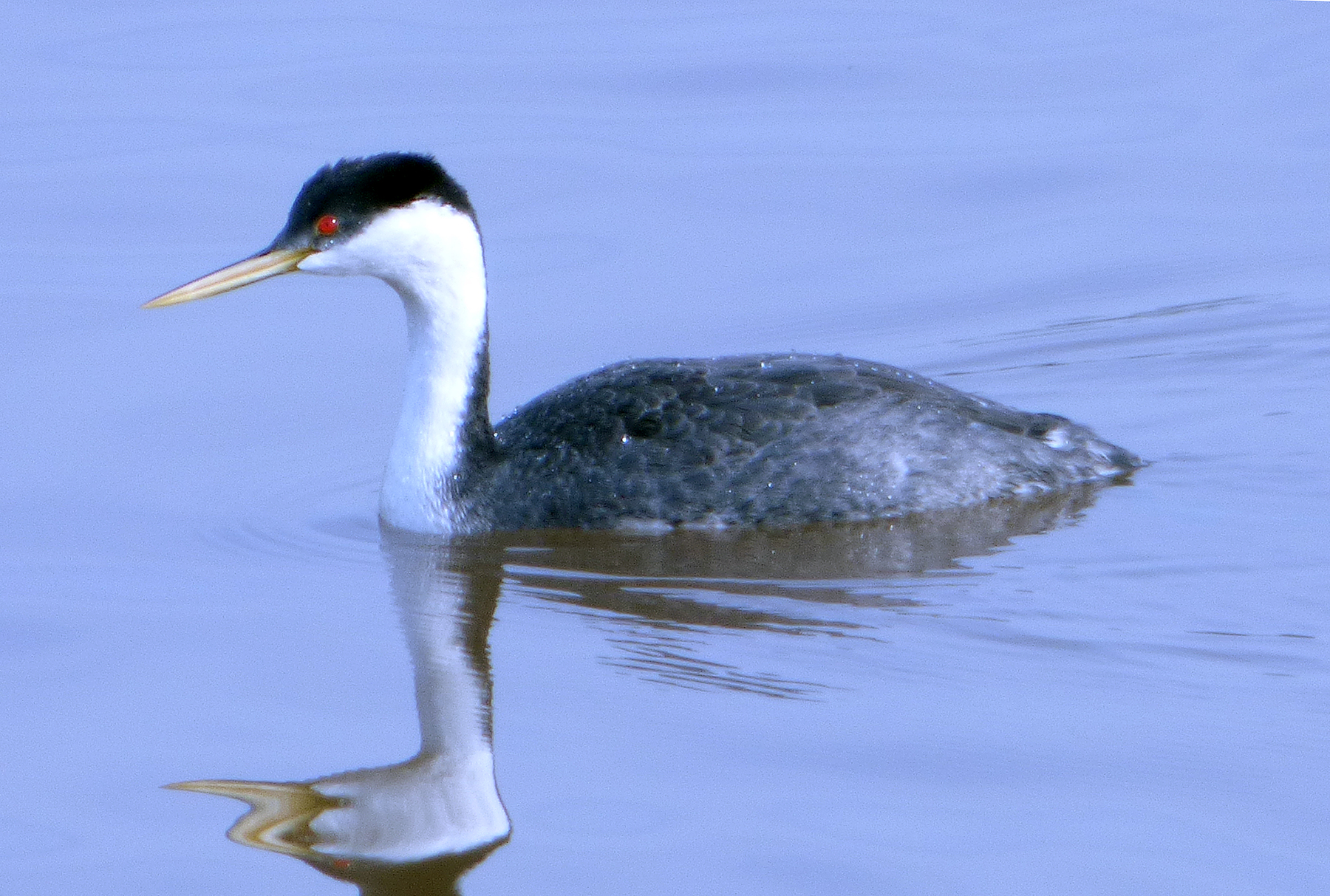
Here’s one of the more common Western Grebes for comparison. Note the eye completely surrounded by black, the olive-toned bill and the darker body plumage. Photo by Jeanine Apgar.
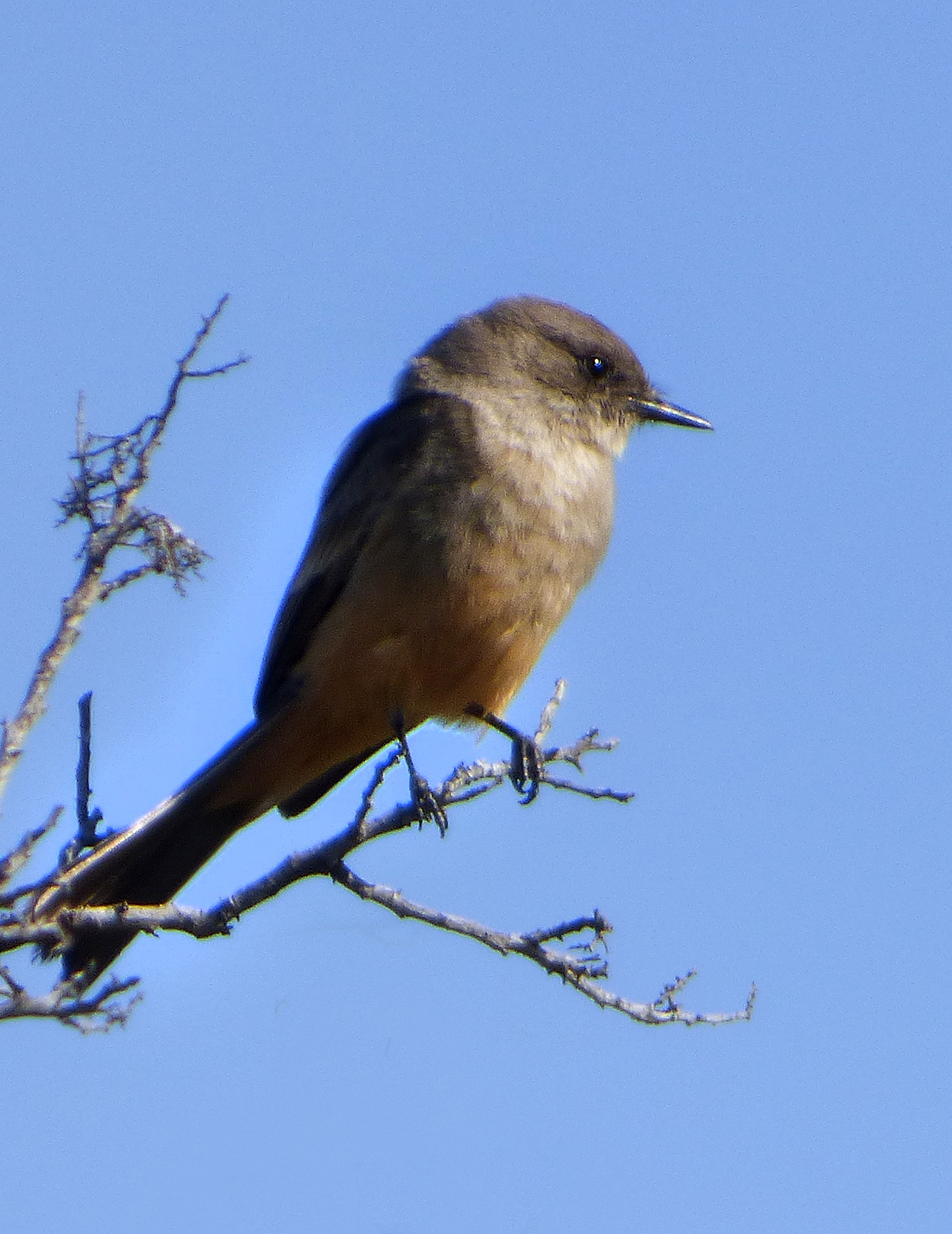
Say’s Phoebes would become a familiar sight on this trip, often in the same habitat as Black Phoebes. Photo by Jeanine Apgar.
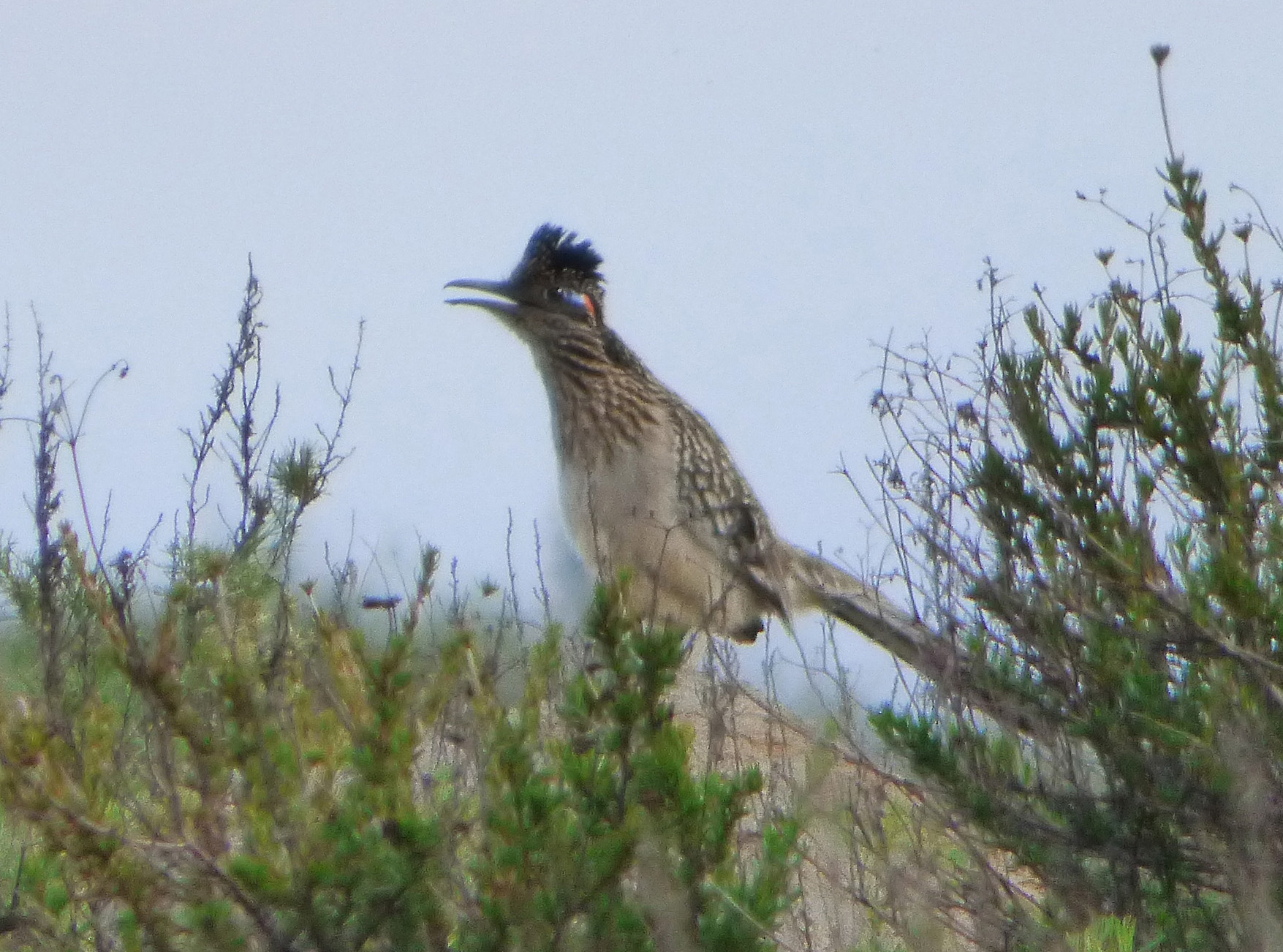
Yes, we did see a couple Greater Roadrunners, including this one near Lake Hodges that eluded the coyote. Meep-meep. Photo by Jeanine Apgar.
Two of our new lifer target species were also found at Lake Hodges: California Gnatcatcher and California Thrasher. The thrasher is even larger than our eastern Brown Thrasher. Luckily, they were singing loudly, and as expected they were doing so from the top of the trees, giving excellent views. My final landbird lifer from the SD scrub was a secretive Wrentit that Jeanine found deep in the brush at Tecolote Canyon the following morning.
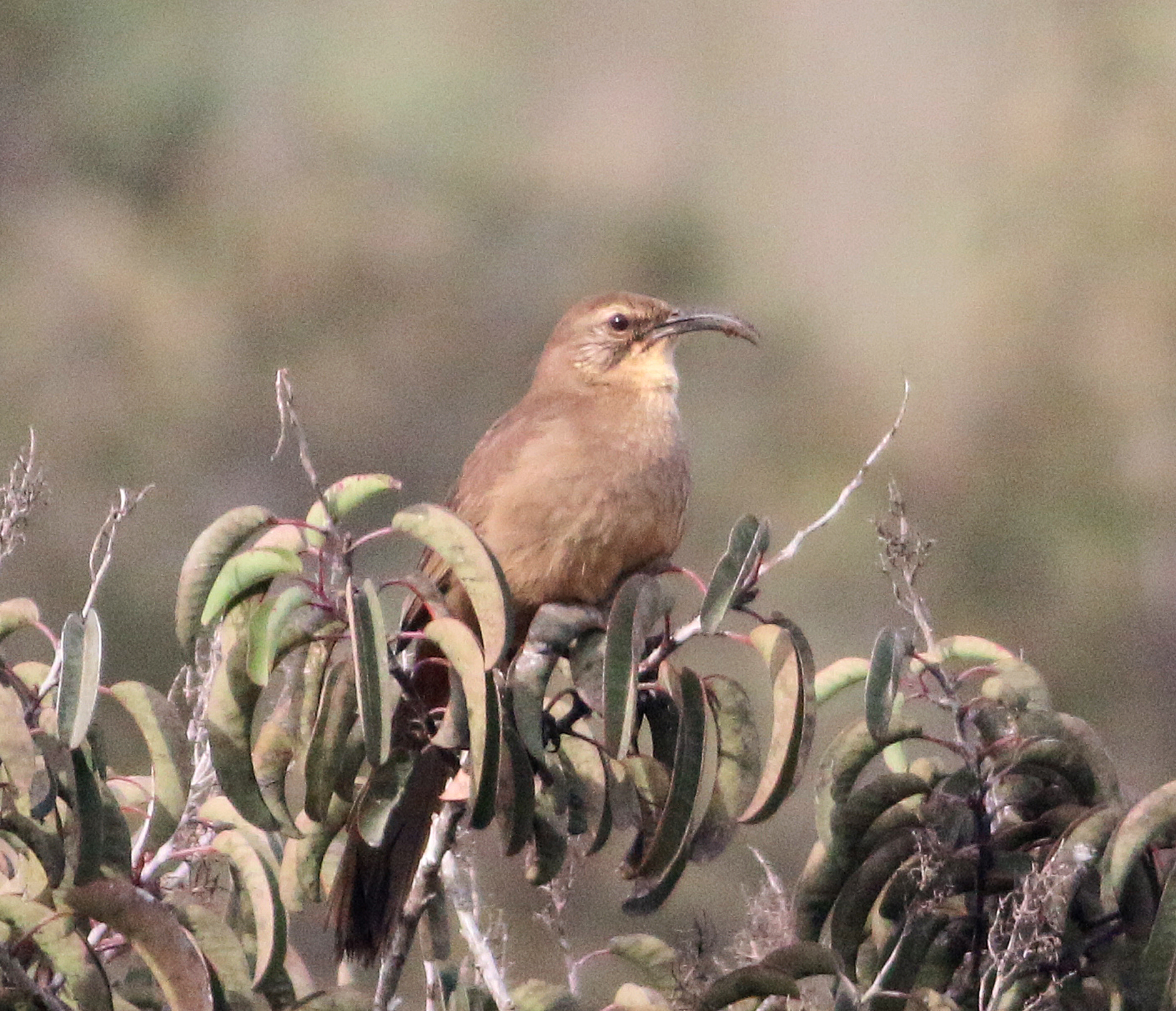
A California Thrasher taking a break from singing up a storm. That is quite a remarkable bill, isn’t it?
The SD waterfront provides ample opportunities for viewing gulls, terns, and shorebirds that we don’t see on the east coast. La Jolla Cove is a photographer’s dream, where we enjoyed impeccable views of Western, California, and the delightful Heermann’s Gulls among the nesting Brandt’s Cormorants. Both Brown Pelicans and American White Pelicans frequently patrolled the coastal waters. Western shorebirds such as Black Turnstone, Long-billed Curlew, Wandering Tattler, and Snowy Plover were all seen, although Black Oystercatcher and Surfbird eluded us.

I hereby nominate Heermann’s Gull as the handsomest gull in North America. This is exhibit A. I rest my case.

San Diego is not far from Tijuana Mexico. Here is part of ‘the wall’ that we hear so much about, visible from Tijuana River Valley Regional Park.
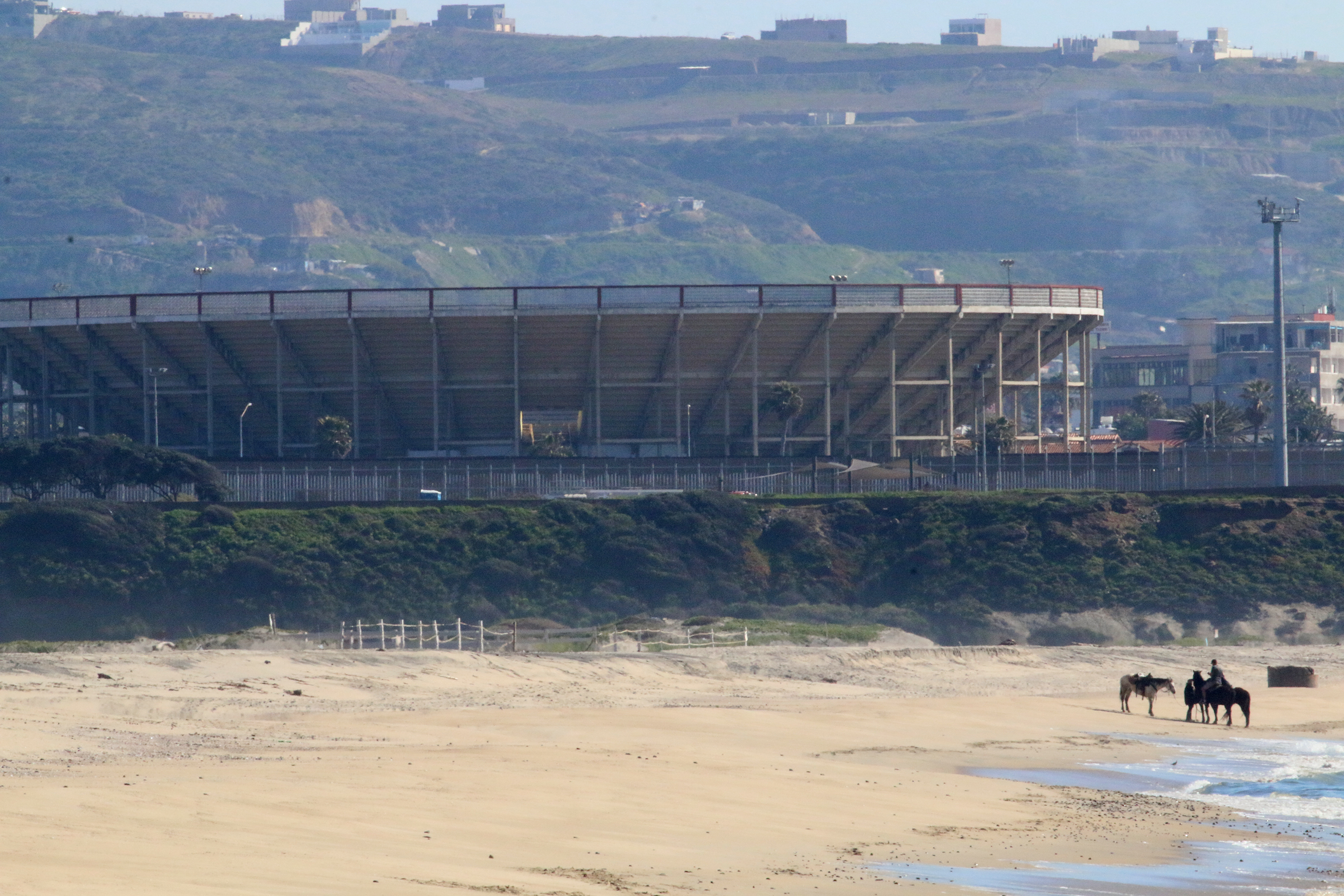
This is the bullring in Tijuana, just across the river mouth from where we were unsuccessfully searching for Pacific Golden-plover and Elegant Tern.
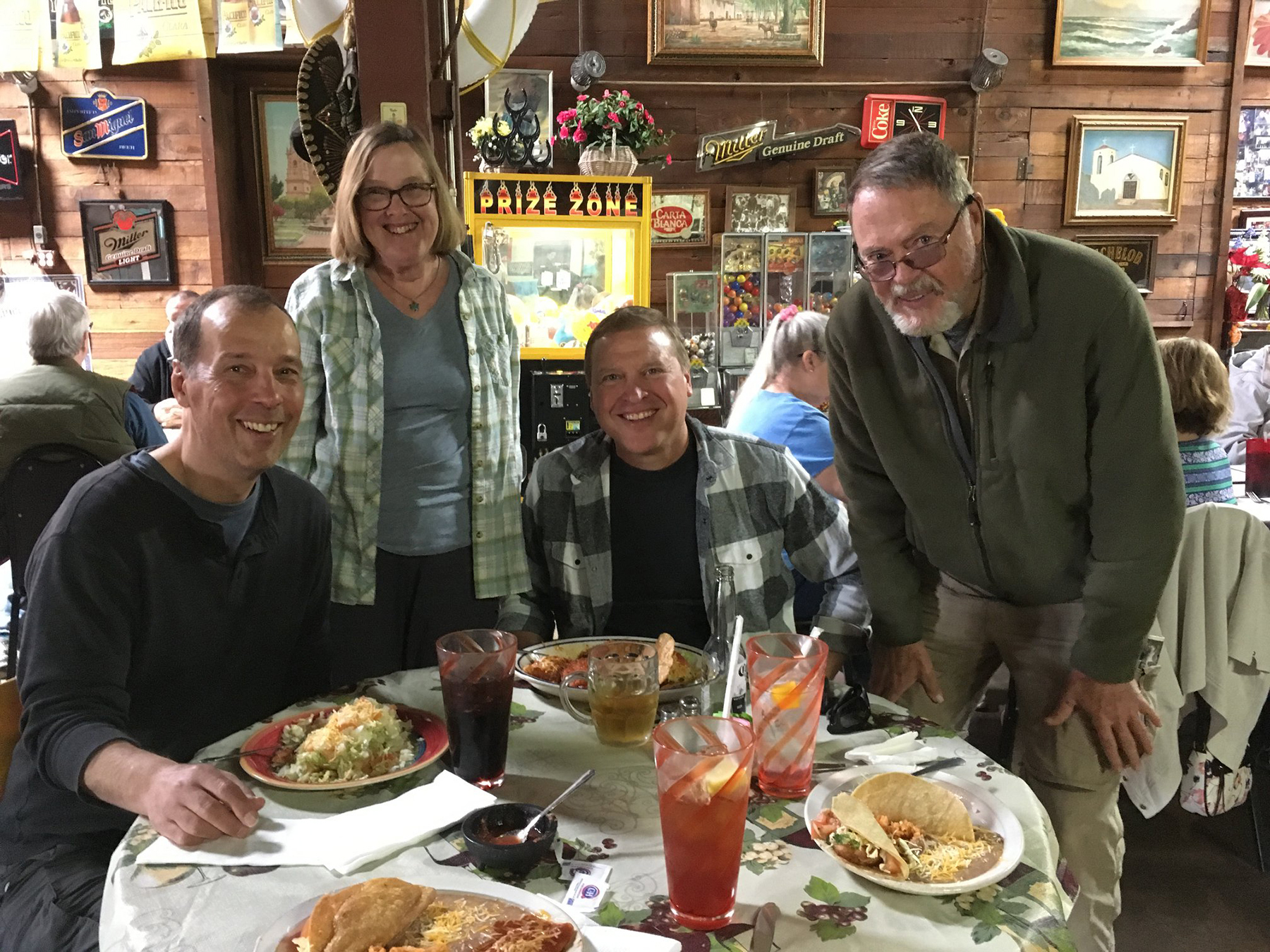
It helps when you know the locals who are tuned into the best places to eat. My good buddy Bri showed us the best Mexican restaurant in Ramona.
After 2 1/2 days of enjoying the birds and pleasant weather and Mexican food (best fish tacos ever!) of San Diego, it was time to move inland to the nearby mountains and deserts. Click here to continue on to that section.
